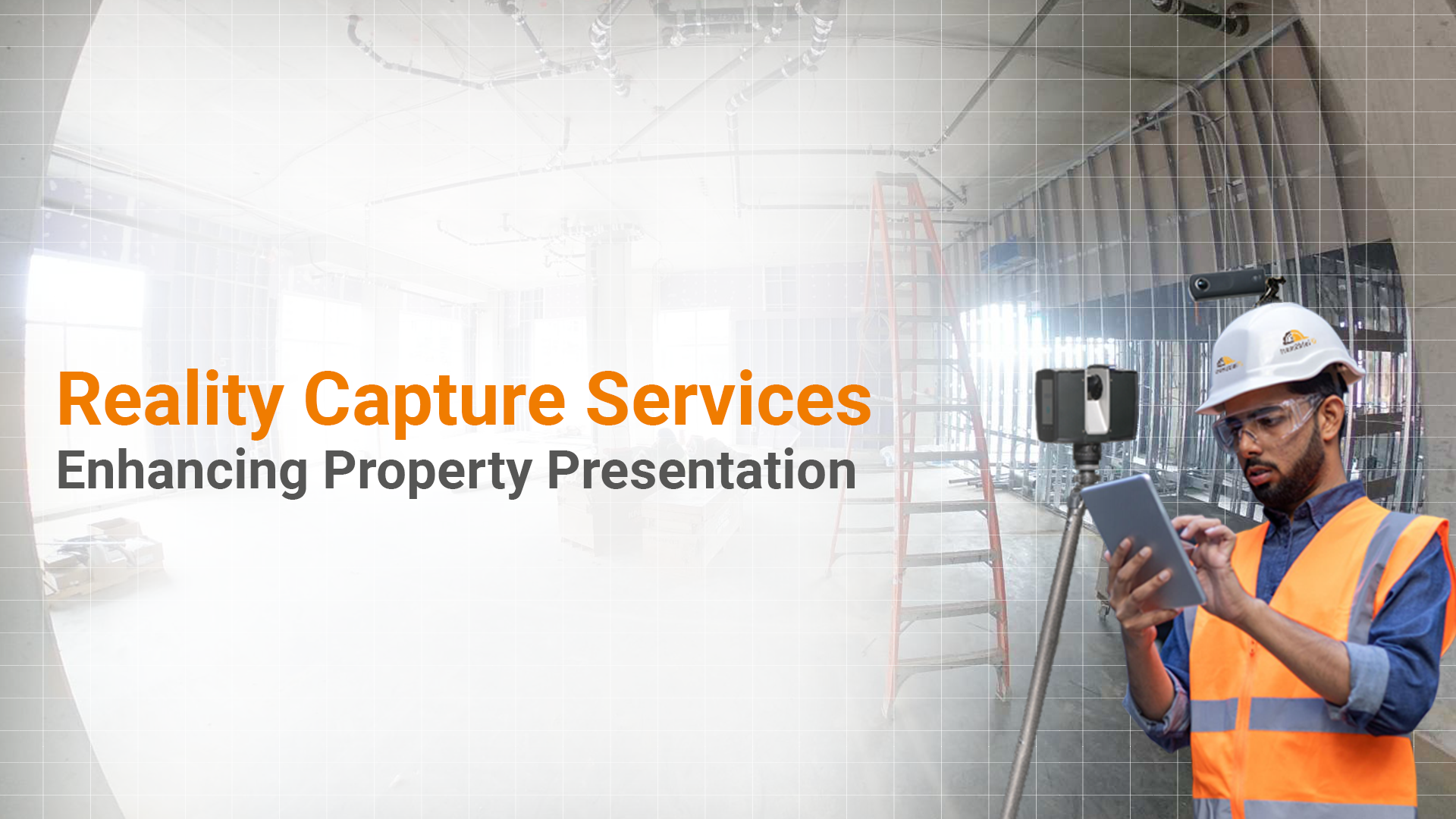In the present day, impressions are done in a digital manner, wherein properties presentations have achieved a dynamic change. Whether it’s a construction site, commercial spaces for lease, or a residential house for sale, the capability to show a property in an accurate, immersive, and vivid method has been significant. Reality capture for property presentations has revolutionized real estate for architects, builders, property owners, and real-estate experts. Using advanced technology including reality capture services provide an engaging and flexible way to breathe life into properties. This improves project management and marketing efforts.
What Are Reality Capture Solutions?
Reality capture can be defined as a tool to collect accurate and in-depth representations of physical sites and objects using tools like 3D scanners, laser imaging, and specialized cameras. For property presentations, these processes and tools generate rich and interactive 3D models that help viewers explore spaces as if they were actually present. From in-depth blueprints to virtual tours, reality capture closes the gap between digital visualization and the physical space.
Exciting changes in the field of reality capture include the use of 360 reality capture cameras which utilizes panoramic images to reproduce detailed property views. The use of these cameras document multiple angles with high resolution images and they are stitched together to create a seamless and interactive experience. Stakeholders can use these photos to generate professional-grade presentations.
The Role of Reality Capture in Property Marketing
In the world of real estate, presentations set apart winners from other realtors. Legacy photography and video were and still are the standard, but they fall behind to communicate the complete scope of the property. 360 reality capture is game-changing tool that helps renters or buying parties create immersive walkthroughs from remote locations. This experience is dynamic and engaging and more impactful than static photos which provides the complete layout, scale, and ambiance that flat images cannot replicate.
For example, real estate agents listing luxury homes can utilize 360 photo documentation to mark important features. It includes ornate stairs, outdoor patios, and kitchens. Potential buyers can zoom into details and watch rooms in their own time, and they can even visualize furniture fitting into the said space. Interactive walkthroughs improve the viewing experience and help create trust through unfiltered property aesthetics.
Furthermore, Reality Capture within property is more than aesthetics leading to greater efficiency. Virtual tours mitigate the need for a physical presence during initial stages of the buying course. This saves time for clients and agents. In a competitive space, properties driven by reality capture always stand out, while pulling greater interest and expediting sales cycles.
Reality Capture in Construction: A New Dimension of Oversight
Beyond marketing, reality capture services are creating changes in the construction sector. Reality capture in the construction sector uses 3D scanning and imaging devices and tools to capture project sites at multiple phases. This technology helps architects, contractors, and construction project managers enable real-time progress and ensure projects are aligned and built with specifications.
Consider construction teams utilizing reality capture 360 cameras to capture a site on a daily basis. 360-degree photos are compiled into a singular time-lapse sequence or placed on digital blueprints to compare As-Built conditions against original 2D plans. The level of accuracy identifies ambiguities quickly be it inaccurate installed fixtures or misaligned walls leading to lower rework and cost savings. Tools like Lens360 improve the process by providing user-friendly dashboards to manage documented data. Moreover, Reality Capture improves communication and collaboration between various participants like builders, engineers, and clients. Remove access of a digital model fosters faster collaboration and decision-making. For large-scale projects including infrastructure, commercial, etc. this technology provides transparency and accountability for every minute space that is documented.
Benefits of 360 Reality Capture for Property Presentation
The use of 360 reality capture delivers multiple advantages that enhance property presentations to greater levels. Listed below are key benefits.
- Enhanced Viewer Engagement: Interactive property tours help tenants and buyers stay engaged longer than legacy media formats. This enhances the chances of greater inquiries.
- Accuracy and Detail: Unlike fat images that mask issues, reality capture delivers an in-depth property view which sets greater trust for buyers and tenants.
- Cost and Time Savings: Mitigating the requirements for various physical demonstrations or time-draining photo sessions, reality capture makes the presentation process seamless.
- Versatility: From smaller projects to large-scale estates, 360 photo documentation can be used for any property size making it a dynamic tool for various project portfolios.
For construction experts, the advantages extend to enhanced project management, lower errors, and accurate documentation for insurance and legal requirements. Data collated through reality capture tools in construction help stakeholders provide a permanent build record, which is invaluable to disputes and renovations.
The Technology Behind the Magic
Reality capture services provide tools like reality capture 360 cameras combine sophisticated software and high-resolution cameras to create exceptional results. These cameras are easy to use and portable while capturing vast datasets in a single session. Connected with platforms like Lens360, users can process project data into refined deliverables for virtual tours, 3D models, or comprehensive site reports.
Even the use of drones for large spaces, properties, or construction sites captures an aerial view that complements ground-level scans. Laser scanners also known as LiDAR provides greater accuracy by measuring distances and generating vast point clouds that leads to the creation of 3D models. Combined these tools produce a precise and comprehensive visual that is visually impactful.
The Future of Property Presentation
As Reality Capture tools evolve, their use in property presentations also extends to various capabilities. The use of VR takes reality capture to another level as it helps users utilize headsets with immersive viewing from remote locations. AI would further improve these tools with tagging capabilities that enhances viewer context.
Within the construction sector, reality capture evolution will lead to real-time tracking wherein cameras and sensors can perpetually update digital twins. This would cause greater oversight and improved predictive analytics which can help document problems before they manifest.
Conclusion
From the immersive use of 360 photo documentation to accuracy of reality capture in the construction sector, these tools and platforms help professionals showcase property that was unimaginable. Software like Lens360 makes this technology possible while it ensures small businesses competing with larger ones. Embracing the power of reality capture to sell a home, lease an office, or monitor construction is a step toward efficient and engaging presentations.

